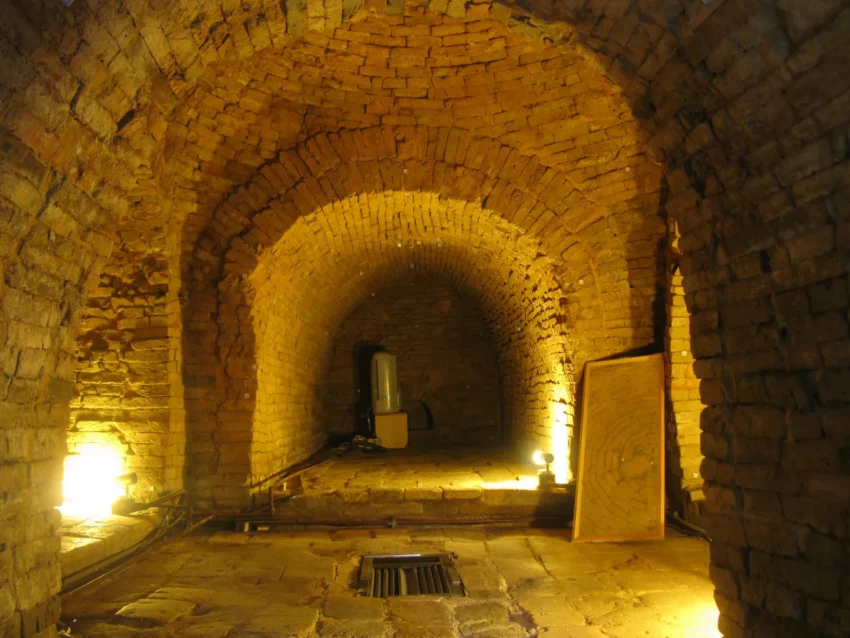Get your dose of History via Email
Introduction to Lei Cheng Uk Han Tomb Museum
The Lei Cheng Uk Han Tomb Museum is an invaluable archaeological site situated in Hong Kong, preserving remnants of the East Han dynasty that once flourished in the region. The tomb was inadvertently discovered in 1955 during construction work for a resettlement area. Following this discovery, the antiquities it concealed became a focal point of historical investigation. As an institution, the museum not only serves as a preserver of Hong Kong’s deep historical roots but also functions as an educational conduit for both locals and visitors, fostering a deeper understanding of the region’s rich cultural tapestry. The Lei Cheng Uk Han Tomb Museum was officially opened to the public in 1988, following the meticulous efforts to conserve and exhibit the archaeological findings.
The Tomb’s Architectural Features
The architecture of this ancient tomb is characteristic of the Eastern Han period, distinguished by the dominance of brick construction. It is laid out in a traditional four-chamber design, which includes a front chamber, a passage chamber, a rear chamber, and then a burial chamber, which was found intact with the entrance sealed by a brick wall. This sealed chamber is what enabled the structure to retain much of its content undisturbed over the millennia. Structurally, the tomb’s layout reflects funeral customs and architectural practice that prevailed during the Han dynasty, providing a window into the period’s mortuary beliefs and societal norms.
Archaeological Findings and Exhibits
The contents of the Lei Cheng Uk Han Tomb reveal significant aspects of historical life. The rear chamber of the tomb was the primary repository for funerary objects, with archaeologists uncovering pottery, bronze wares, and other artifacts within its confines. These objects were instrumental in deducing the likely age of the tomb, dating it to the Eastern Han dynasty, specifically the 2nd century AD. However, the absence of human remains or inscriptions has led to ongoing debates about the tomb’s origins and the identity of its occupant. The museum now houses several of these notable discoveries, providing a narrative of the tomb’s legacy through its displays. A replica of the tomb’s interior is also presented, offering viewers an immersive experience of the site’s historic ambiance.
Cultural Impact and Educational Value
The Lei Cheng Uk Han Tomb Museum is more than just an archaeological site; it is an institution that embodies Hong Kong’s historical evolution and its integration of various cultural influences. By providing access to tangible remnants from the Han dynasty, the museum underscores the historical significance of the region and facilitates academic research. Educational programs reveal insights into the past to students and enthusiasts, fostering a collective appreciation for heritage preservation. The museum’s ongoing efforts to engage with the public through exhibits, publications, and activities has made it a central piece in the cultural mosaic of Hong Kong.
Conservation and Heritage Management
Protecting the integrity of the tomb and its contents has been a mainstay of the museum’s operations. Adhering to stringent conservation principles has been paramount in ensuring that the tomb withstands the pressures of modern urban development and environmental factors. The museum’s work encapsulates best practices in heritage management, showcasing how urban spaces can harmoniously accommodate historical sites. The conservation strategies implemented here serve as a blueprint for the management of other archaeological sites, balancing preservation with the educational and cultural enrichment of the community.
Conclusion
The Lei Cheng Uk Han Tomb Museum remains a testament to Hong Kong’s multi-layered history, and through its stewardship, the legacy of the East Han dynasty continues to be illuminated. Its role in the community extends beyond its function as a repository of the past; it acts as an educational nucleus and pylon of heritage consciousness. This reconciliation of the ancient with the contemporary prompts individuals to contemplate the impermanence of human constructs against the backdrop of an ever-evolving societal canvas.

